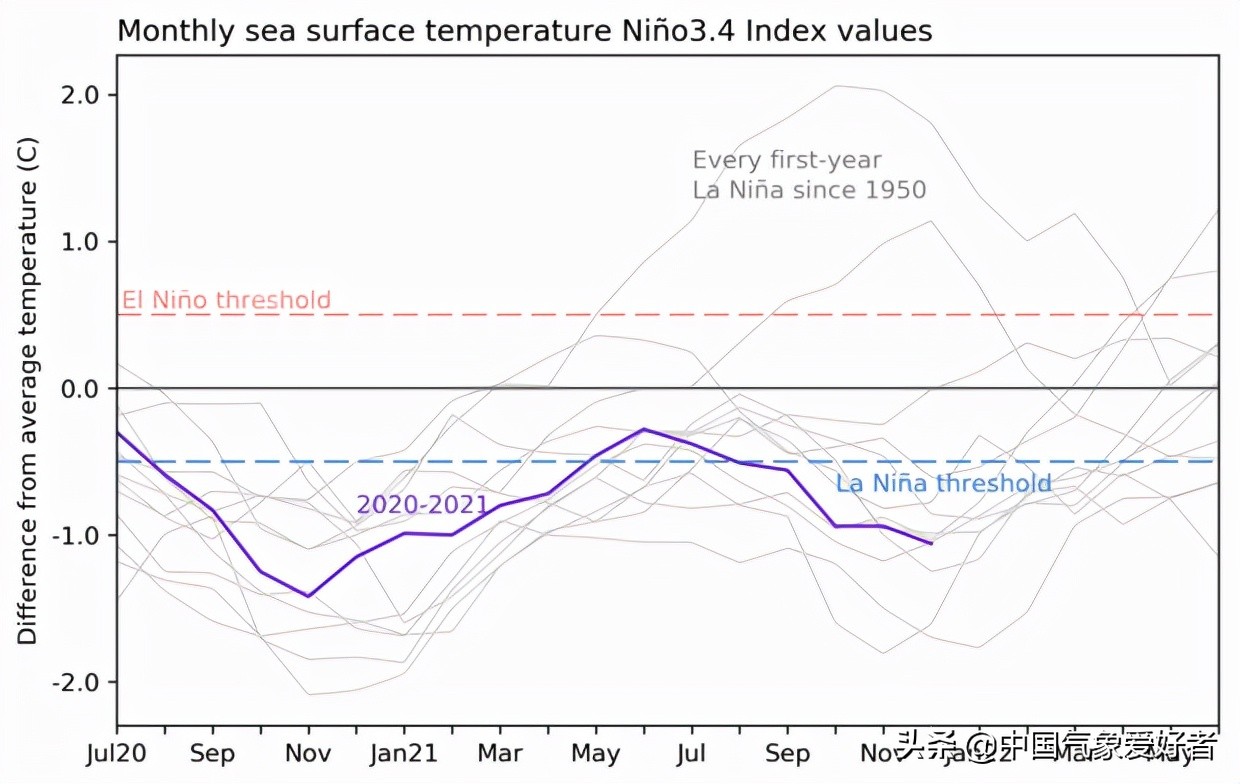#汤加火山会导致日本富士山大爆发吗 #
In the second half of 2021, the signs of La Niña gradually became clear, and the water temperature in the tropical Middle East Pacific region dropped significantly in the autumn and winter, and multiple meteorological agencies announced that La Niña was coming, and a double La Niña event was formed in 2020-2022.

However, for many netizens, it seems that the existence of La Niña is a bit unperceived - since the winter of this year, the temperature in many places on the mainland has actually been flat or higher than the same period of the year, and the range of cold areas is relatively small, and the cold in the forecast has not yet appeared. But the impact of La Niña in North America is indeed very typical, with drier weather in the south-central and southeastern United States over the past three months, while the Pacific Northwest, northern California and the Ohio River Valley are wetter, and some areas have even made headlines because of torrential flooding, which are classic Patterns of La Niña precipitation.
The U.S. Oceanic And Atmospheric Administration (NOAA) notes that La Niña's intensity is likely to reach a near peak in late 2021-2022. But recent monitoring data suggests that the cool water temperatures near the equator in the Middle East Pacific are rapidly receding, meaning La Niña appears to be peaking and declining after reaching its peak. Of course, Because climatic effects lag behind changes in surface temperatures in the tropical Pacific, La Niña's influence in the atmosphere continues, but this change means that La Niña is indeed beginning to show decline.
Currently, climate forecasters believe that the likelihood of La Niña will decline rapidly in the spring and that the tropical Middle Eastern Pacific Ocean will likely transition to neutral conditions between April and June, after which the likelihood of neutral conditions that are neither La Niña nor El Niño will be the greatest, but the likelihood of El Niño has increased. This situation means that there is still a lot of uncertainty in the later stages.
Then some netizens also have to ask: How come the cold water temperature in January is said to have subsided, is this a tonga volcano dry? According to the international general zoning, the location of the Tonga volcanic eruption is exactly on the south side of the key monitoring sea area, especially the south side of the Nino4 area and the south side of the Nino 3.4 area, and the sea temperature of the Nino 3.4 area is one of the important bases for judging the state of La Niña/El Niño.
Previously, the Chinese Academy of Sciences pointed out that the climatic impact of large-scale volcanic eruptions is not limited to global temperature, but also affects the distribution of tropical SST, thus interfering with the climate. Analytical data show that el-Niño-like situations occurred after some volcanic eruptions in the 20th and 21st centuries. Zhou Bing, chief expert of the National Climate Center, said in recent days that volcanic eruptions, especially in the central Pacific island country of Tonga, are very normal to have different academic views on the connection between El Niño-La Niña, and consistent conclusions have not yet been formed. Arguably, the impact is uncertain, but what is certain is that this Polanina is weakening, and the effects of the La Niña Circulation will continue in the winter and spring of the Northern Hemisphere.